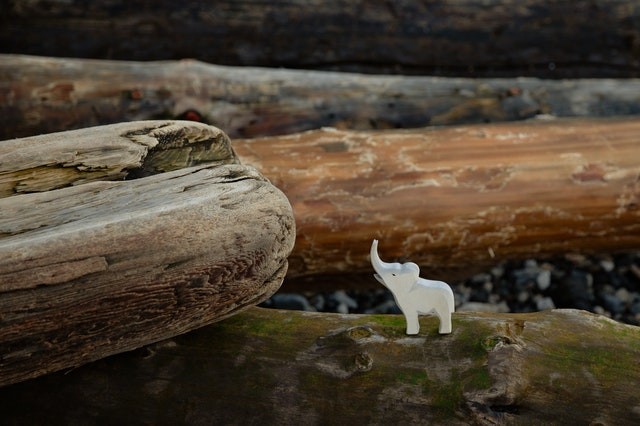Origin, Types and History of Elephants
While the origin of elephants is unclear, “More than 250 species of elephants and elephant-like creatures have roamed the earth in the past. Ancestors of the elephant include the Moeritherum (a pig-like animal that lived 40 million to 30 million years ago), the Piomia (a pig-like animal with a long snout that lived 37 million to 28 million years ago), Deinotherium (an elephant-like animal with downward-hooking tusks that lived 24 million to 1.8 million years ago), the Primelephas (an animal that looked like a modern elephant and lived from 6.2 million to 5 million years ago). African elephants and Asian elephants diverged from a common ancestor about 6 million years ago. They lived at the same time as American mastodons (who lived from 3.75 million to 11,500 years ago) and wooly mammoths (who lived from 400,000 to 3,900 years ago). Ancestors of elephants, such as mastodons and wooly mammoths, have been found all the continents except Antarctica and Australia. In 2009, a well-preserved, 200,000-year-old skeleton of a giant prehistoric elephant was found in Java, which itself was unusual in that bones usually decompose quickly in humid, tropical climates. The animal stood four meters tall and weighed more than 10 tons, which was closer in size to a wooly mammoth than a modern Asian elephants. Another Indonesian, Flores, was the home of stegodons---extinct elephant ancestors which were about the size of a cow, or about a tenth of the size of an Asian elephant.” The African forest elephant (Loxodonta cyclotis), which lives in rainforests, was recognized as a separate species in 2000 and is smaller than the savanna elephant. It has slender, downward-pointing tusks. The common belief that there existed “pygmy” and “water” elephants has no basis; they are probably varieties of the African forest elephants. On the other hand, the Asian elephant (Elephas maximus) weighs about 5,500 kg and has a shoulder height of up to 3.5 metres. The Asian elephant includes three subspecies: the Indian, or mainland (E. maximus indicus), the Sumatran (E. maximus sumatranus), and the Sri Lankan (E. maximus maximus). African elephants have much larger ears, which are used to dissipate body heat. Well, we need days to read about their origin, shape, appearance and species. Let’s take a look at how various cultures celebrate the existence of elephants. Historical records of tamed elephants dates back to the days of Indus civilization, “at Mohenjo-daro and Harappa, Pakistan, soapstone carvings depict elephants with cloth on their backs, which indicates use by humans. Mahouts and oozies (elephant trainers in India and Myanmar, respectively) are skilled people who remain in direct contact with the animals for many years. The handlers take care of all the elephants’ needs, and the bond between man and beast becomes very strong. Hastividyarama, an age-old handbook for elephant tamers, spells out prescribed training procedures in detail and is still used today in some parts of Asia. Commanded by its mahout, the elephant was once basic to Southeast Asian logging operations. It remains a symbol of power and pageantry but has been largely supplanted by machinery. African elephants were also tamed during the19th century, in what was the Belgian Congo. Training of these forest elephants was initiated by King Leopold II of Belgium and was conducted by Indian mahouts with Asian elephants. African elephants are now used mainly for transporting tourists in Garamba National Park, where they are valuable in providing revenue to sustain its activities.” - Jeheskel (Hezy) Shoshani, Britannica. At the beginning of the 21st century, fewer than 50,000 Asian elephants remained in the wild. Thailand and Myanmar each had about 5,000 captive elephants employed in traditional roles intermingled with modern use as tourist attractions. Threatened by habitat loss and poaching, Asian and African elephants are listed as endangered species. From 1979 to 1989 the number of African elephants in the wild was reduced by more than half, from 1,300,000 to 600,000.










